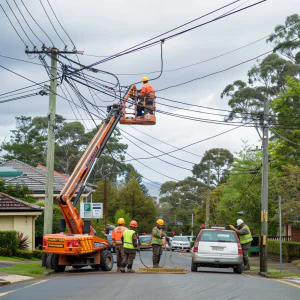Many different perspectives and attitudes drive a safety strategy. In this blog, I wanted to touch on some personal experiences and learnings I’ve had along the way around what drives safety strategy, including bias and how to avoid it.
It is astonishing how often I hear that we need to have the right paperwork and systems in place so if the worst-case scenario happens, no one goes to prison. I also constantly hear and see the word ‘compliance’ as though that is the goal a company wants to achieve. In my view, compliance is the most childish form of safety! Compliance means you are only doing or implementing something because you are told to. and not because you think it is the right thing to do. This is akin to when a mother or father tells their child to do something ‘just because’ (which is what I was always told when I was a child).
The ultimate goal of a safety strategy should always be around the ability to enable your workers to perform their work in a safe and efficient manner. How you go about doing this can be tricky and it is often very difficult to determine if you have the right strategy for your business. Whatever your strategy involves it should always link back to keeping your people safe and efficient.
There should be a consistent high-level message (policy) to all employees of what, as a business, we are trying to achieve. This doesn’t need to change or waiver too much as people, industry, and technology change. The actions within this strategy of how you achieve this, and it is these actions that should be as fluid as a politician’s promise. By the end of the year, the strategy that you had at the start of the year should no longer be “the right one” (especially this year)!
Bias Effect on What Drives Your Safety Strategy
But the question is, what actually drives this to-do list (strategy) and how do we know that all the time and all these resources that we are applying to it are actually going to benefit the business?
The issue lies in the fact that the policy of making our workers safer and more efficient, is not the only thing that drives your strategy. Let’s be honest, the policy is never going to be the only thing that drives your strategy, you need experience, knowledge, learnings, qualifications, and problem solving to determine the best way to develop a fluid safety strategy to achieve a static policy or goal.
However, you must try your best to avoid unnecessary biases. Biases of what we believe is best for a company or business (and thus works its way into a strategy) is the number one reason that workers on the ground dislike many safety processes and practices, and often become frustrated with IT systems which are implemented as part of a safety strategy.
The most typical bias is, by far, that what many of us believe is the correct strategy, is driven by what was done at the last company we worked for. Our brains simplify the information to tell us that this procedure, process, technology, or whatever it is, worked for the last company, and thus it must work for this company. I am definitely guilty of thinking this way and implementing expensive and time-consuming processes and technology that did not add tangible value.
Try Engaging in System Two Thinking When Developing a Safety Strategy
To remove this bias from our safety strategy we need multiple opinions from different parts of the organisation, but more importantly, we need analytical thinking or system two thinking. This type of thinking is what Daniel Kahneman calls thinking slowly and is a conscious attempt to remove reactionary thought and cognitive bias to achieve the desired result.
A great example of this system one versus system two thinking comes in the way of the following quiz question. If a baseball bat and a ball cost $1.10 together, and the bat costs $1.00 more than the ball, how much does the ball cost?
Most people immediately jump to 10c as their answer, which disappointingly for them, would be incorrect. The ball costs 5c and the bat costs $1.05 to equal $1.10. Pausing and thinking slowly enables us to reduce reactionary thought, helping the quiz player reach the correct conclusion. It’s vital that the same approach is taken to recognise that we will have some cognitive bias towards certain ways of thinking, which will affect the development of a strategy.
I too am guilty of thinking in this manner with the development of RiskTalk. I was under the belief that all forward-thinking companies should be heading towards encouraging open thought, trusting our employees to make the right decision, and empowering the employee, however, this does not work in every case.
Because I was so invested in RiskTalk, I thought everyone should have it and be using it as the key tool in their frontline risk management, until one day, I was sitting on an airplane and thought, would I really want this pilot using RiskTalk or would I want her/him to use a checklist to ensure she has covered all their basis? It was only then when I removed my bias towards RiskTalk, that I could develop a strategy of who would truly benefit from the use of it.
A cook following a recipe, an engineer working through calculations, and a pilot running through a pre-flight check should minimise human error and input as much as possible and therefore RiskTalk perhaps would not work as effectively for them.
Those workers in construction, mining, utilities, heavy industry, etc, who have everchanging work environments, people, and tasks, should be constantly analysing and adjusting accordingly to achieve the desired result, and thus RiskTalk would be of huge benefit. It was only after this removal of my bias and some thinking slowly, that I was able to develop a strategy which was of greatest benefit to the company and the users of RiskTalk.
Conclusion
Developing a strong and fluid safety strategy needs all involved to constantly think analytically about how they can achieve the desired result of working safely and efficiently. If it doesn’t achieve this then we really should take a step back, have a look at what the action in the strategy is going to achieve, and hopefully, have the ability to pivot and have the greatest impact for the worker on the ground.






